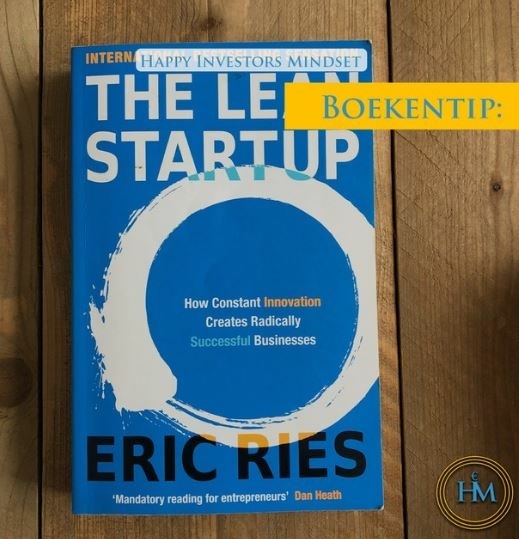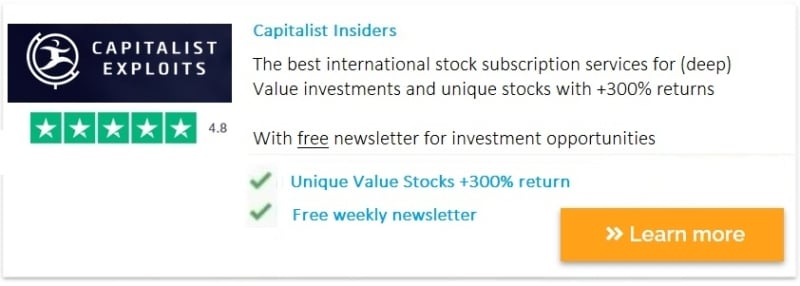The book The Lean Startup by Eric Ries is a revolutionary work that transformed the world by introducing the Lean Startup model. It's a must-read for every entrepreneur. In this article, you will find a summary of The Lean Startup with the key concepts and ideas.
About the book

Eric Ries has merged the knowledge gained from managing startups with the ideas of lean manufacturing to develop a strategy for establishing new businesses that are capital-efficient and better exploits human creativity. This book shows entrepreneurs how to deal with huge uncertainty by testing their theories with a minimum viable product (MVP).
The Lean Startup provides a framework for entrepreneurs to test, learn from, and modify their strategy through a cycle of continuous improvement instead of generating lengthy business plans.
About the author
Eric Ries is an American entrepreneur, author, and blogger. Additionally to The Lean Startup, he wrote The Startup Way, a book on contemporary entrepreneurial management.
Eric Ries has been assisting large corporations like General Electric and Toyota in becoming more dynamic to encourage growth and provide goods and services that customers want.
Key Lesson from The Lean Startup Summary
In a nutshell, here is the key lesson from The Lean Startup summary:
"What distinguishes the success stories from the failures is that the successful entrepreneurs had the foresight, ability and tools to discover which parts of their plans worked brilliantly and which were misguided, and adjust their strategies accordingly." (c) Eric Ries
The Lean Startup revolves around a methodology of rapid learning and agile working while continuing to work toward the higher purpose. This applies to both starting a side hustle and starting a larger company.
What is the lean method?
The Lean method consists of a series of steps suggested to those interested in creating a company or in the development of goods and services. Its foundation lies in guiding the creation of the business unit or the projects based on the clients. In other words, all work is geared toward customer satisfaction. For this, the method implies practices linked to continuous innovation.
The entrepreneurs must pursue the achievement of the vision, mission, and strategic objectives. All this is based on strategic planning, which implies the development of a business model, study of competitors, internal and external clients of the organization, goods, and services.
In all cases, organizations should contemplate the basic principles of business administration by considering the vision as a matter that remains fixed in the long term. On the other hand, the strategy should be modified over time according to the demands of the environment in which the organization finds itself immersed.
Business strategies are subjected to continuous empirical testing to ensure growth and profit maximization. Thus, experience in the field becomes cumulative. Knowing the client implies knowing what they need at all times. The degree of knowledge accumulated by the company is measured in the management indicators that will mark the need for change at each stage of the business life.
Basic principles of the Lean method

The Lean method is based on basic principles or stages similar to those of driving a car. Likewise, it recognizes its origins in the developments carried out for continuous improvement by the Japanese company Toyota.
The business organization is considered a system that continuously feeds back. Thus, the concept of customer transcends the mere purchaser of external products to consider internal customers as such, that is, all members of the entity. Thus, the production sector will be a client of the warehouse sector, or the finance sector will have the sales or human resources sector as clients, etc.
So, to introduce continuous improvement, it is necessary to comply with a series of stages. In this summary on The Lean Startup, we briefly go over these phases:
1. Build
In all undertakings, one must start from the hypothesis of value creation. Thathah will undoubtedly lead to growth. To find out the best alternative, one should experiment with trial and error procedures, adjusting at each step until one finds the product that most satisfies customers.
For this, the surveys and information from the customer service centers are fundamental because they capture all the complaints and perceive the degree of customer satisfaction with the goods and services that are marketed.
Business plans are an essential tool in which one establishes specific assumptions and draws up a strategy and a proposal to achieve the company's vision and mission. Here one should also determine the minimum viable product to see if one correctly perceives the client's needs.
2. Measure
During this stage, it is necessary to highlight that errors occur in every company while planning and executing the programs. When you start a business, you must have a more systematic and disciplined vision. In this way, it will be possible to determine how much progress was made in achieving the growth objectives.
It is crucial to account for innovation. For this, the starting point must be clear, with the real data, then optimize the growth engine. Finally, one will decide to continue or make the necessary changes.
In all cases, one must develop the most appropriate management indicators for each stage. The analysis should always consider consumers or end users. At this stage, statistical measurements in clusters analyzes of covariances and others are great tools.
Customer service and technical support are excellent sources of information because they receive reports of failures and complaints.
3. Learn
This stage emphasizes the concept of productivity, considering the cohesion of efforts with added value and growth. It is important to make the necessary changes based on the feedback received in the previous stage.
In case of not perceiving the need to change in time, it can cause the loss of the market and one will get stuck at a point where greater and greater losses will occur.
Some of the so-called pivot points, that is, drivers of change, are:
- Zoom-in pivot: a feature becomes a product
- Zoom-out pivot: a pivot in which the product becomes a feature of a larger product.
- Customer segment pivot: the product becomes attractive to a different target customer.
- Customer need pivot: the information obtained from the target customer shows that the problem solved is not very important or money is not available to buy.
- Platform pivot: change from an application to a platform, or vice versa.
- Business architecture pivot: go from B2B to B2C or vice versa
- Value capture pivot: implementation of modifications to revenue models.
- Engine of growth pivot: changing how you grow – through virality, engagement, or paying to get users.
- Channel pivot: changes in the mechanism by which a company delivers its product to customers.e
- Technology: changes in the combination of production factors (technology).
The brake on change can occur due to the use of too high standard indicators that lead to errors in the decision-making process. There may also be failures to quantify errors or fears of failure. All of this has direct consequences on morale and risk.
While creating a product, every entrepreneur must make a difficult decision: when to change course and when to carry on. Most business owners who have chosen to pivot affirm that they regret not acting sooner.
What is an MVP in the Lean Approach?
Minimum Viable Product (MVP) is a Lean Startup concept that emphasizes the importance of learning in the creation of new products. An MVP, according to Eric Ries, is the version of a new product that enables a team to get the most verified data about customers with the least amount of work.
Whether or not your clients buy your product is how you may validate your learning.
A main principle of the MVP concept is that you create a real product that you can provide to clients and watch how they use it. Asking individuals what they would do is significantly less reliable than observing what they do about a real-life product.
The Lean Startup summary will help you get started. If you're serious, we recommend buying the book. A marginal investment with possible exponential returns. Starting a successful business is one of the best ways for becoming financially independent. We do this, of course, parralel to ETF investing and investing in real estate






![TUI (TUI1) Stock Analysis: Price Target, Risks, Strategy [2022]](https://media-01.imu.nl/storage/thehappyinvestors.com/4861/responsive/6689941/tui-stock-analysis-2560x1100_614_264.png)

